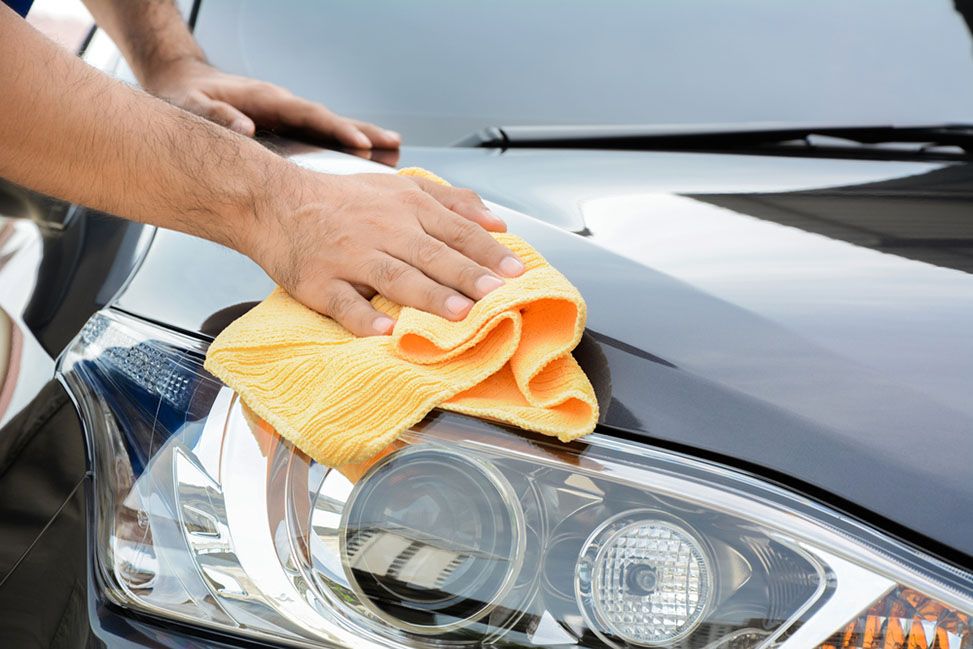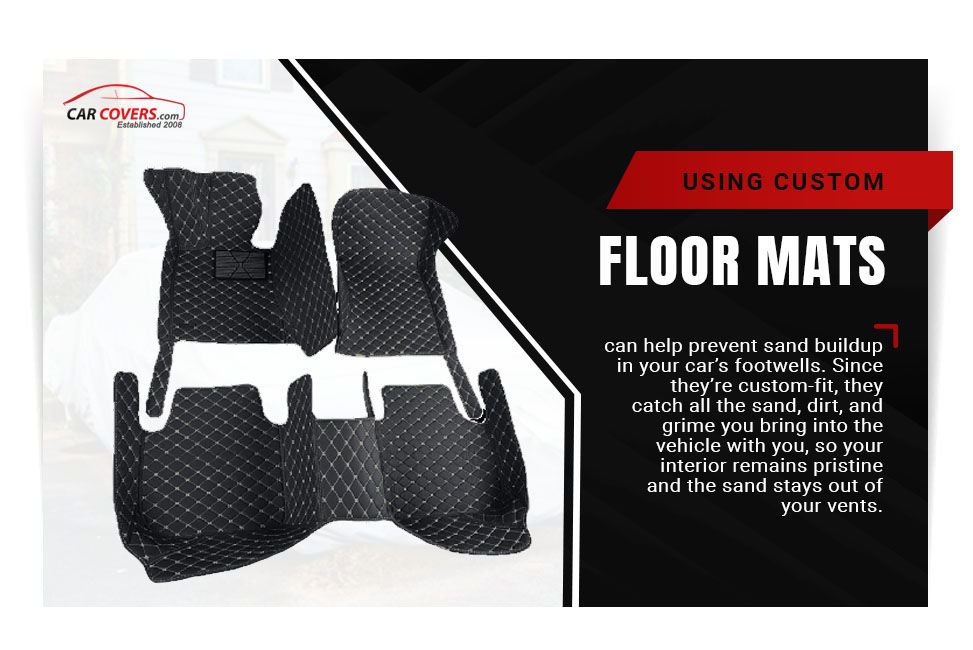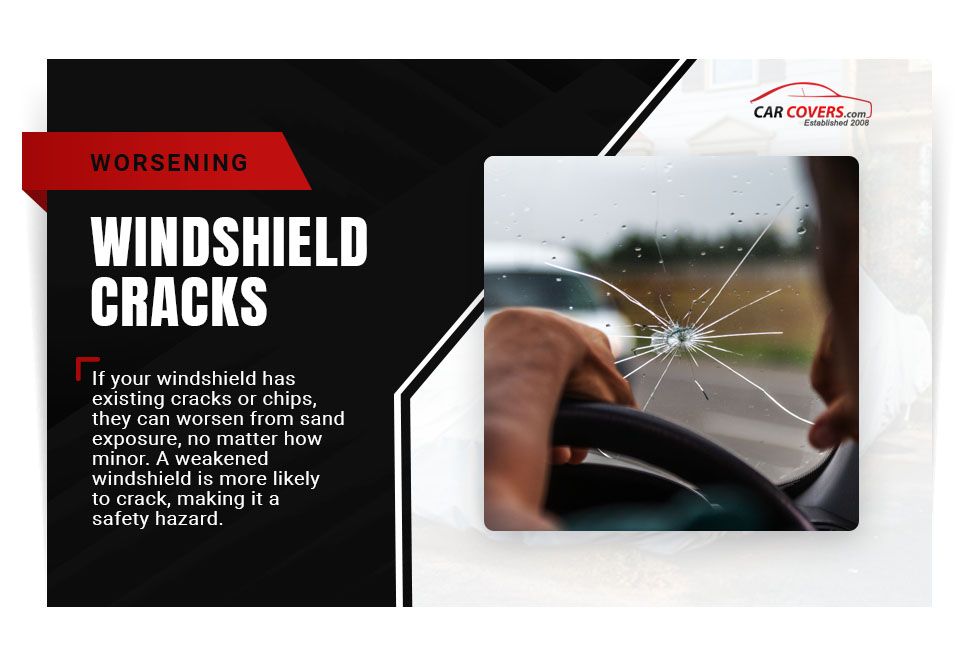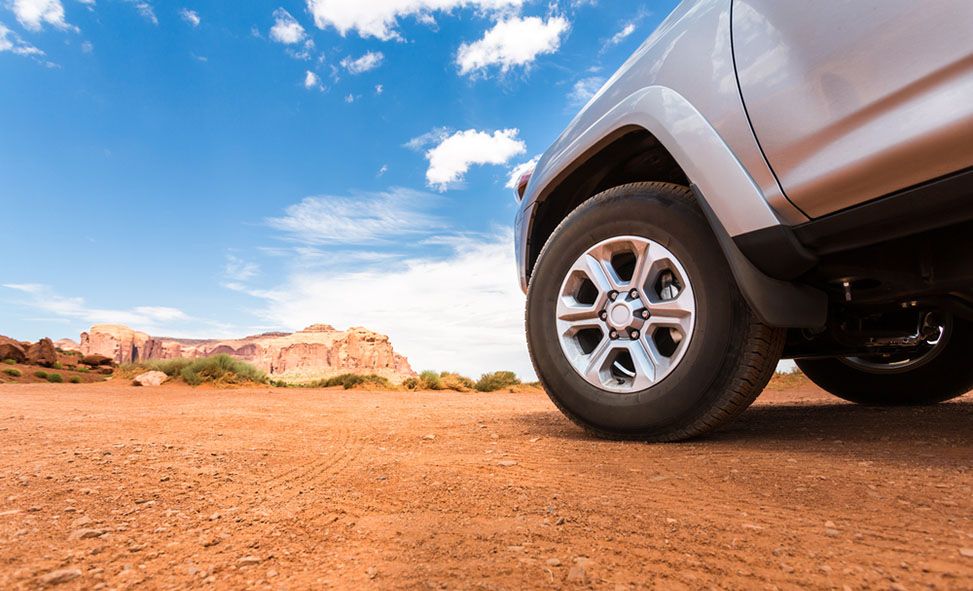
How to Protect Your Car from Sand Damage
Living next to the ocean or in the desert is an experience rich with exquisite views and breathtaking sunsets, but this environment may be wreaking havoc on your car’s exterior. And it’s not just the exterior of your vehicle that you need to worry about; the inner workings of your vehicle are just as vulnerable to sand damage as the rest of it. To protect your car from sand damage, along with salt and sun damage, you need a high-quality aftermarket car cover to keep blowing sand, your car’s worst enemy, at bay. Here is some information about why the weathering process occurs and what you can do to ensure your car remains unscathed by wind, sand, and sun.
What Is the Weathering Process?
You may be wondering what causes rust on cars or how sand damage occurs. Accelerated deterioration happens most often with two specific elements—intense UV rays and blowing sand. You’ll also notice deterioration and rusting on your vehicle from prolonged exposure to salty ocean air. If you’re driving among the dunes with your vehicle this summer, be wary of how the coastal environment can impact your car’s paint job. The combination of hot sun and salty ocean air can spell disaster for your vehicle because the heat enlarges the pores in your car’s paint, promoting absorption of the salt coming off the ocean. Over time, this leads to rust and corrosion of your paint.
Sand causes damage to several paint layers on vehicles, including the primer or base coat, the pigment, and the clear coat that seals the paint job. Some cars have a nano-particle ceramic coating for added protection. If you didn’t remember to ask for the ceramic seal, you could use a custom car cover to protect the exterior of your vehicle from both sand and sun, which are significant damage accelerants. Paint and metal are just two materials comprising a car’s exterior. Plastic trim, rubber, chrome, and headlights all suffer a degree of damage from exposure to blowing, gritty winds for long periods.
How to Protect Your Car’s Paint Job
Your car’s paint job is one of its most visually appealing attributes, so, naturally, you’ll want to keep it in pristine condition. Even if you frequently drive through sandy terrain, it’s possible to keep your car’s exterior from succumbing to sand damage as long as you take the appropriate measures. Here are a few ways you can care for your car’s paint job to keep it looking pristine.

• Car covers
To protect your paint job from the worst of the desert wear and tear, you should use a custom car cover to safeguard your vehicle when it’s not in use. You can choose between an outdoor or indoor option and select your cover by make and model type so it will fit your car exactly, minimizing the amount of debris that can reach your car when it’s parked.
Look for a cover like our Deluxe Shield Car Cover, featuring an elastic hem and grommets that allow you to tighten the cover around the base of the vehicle and secure it, preventing gusting winds from blowing sand underneath the fabric. For the best protection in hot, sandy areas near the beach or in the desert, ensure your cover offers adequate UV protection to reduce heat damage to your car as well.
Shop Our Entire Selection of Car Covers
• Regular washing
One of the easiest ways to preserve your car’s paint job is to perform regular washes, especially after you’ve driven in a sandy area. A simple wash and rinse with warm, soapy water is good enough to remove any sticky sand particles from your vehicle’s exterior. Avoid wiping the car down with a flat sponge because sand can stick to the sponge, causing you to drag the grains across the paint, scratching your car while cleaning. Instead, opt for a soft microfiber cloth to get the job done right.
• Waxing
After cleaning your car thoroughly and removing any grains of sand from the exterior, consider waxing your vehicle to protect it from scratches and reduce the likelihood of sand adhesion. Choose a high-quality automobile-specific wax, which will come in one of two varieties. The first option is carnauba wax, which comes from the leaves of Brazilian palm trees and leaves your car with a stunning shine. The alternative is to choose a paint sealant, which offers longer-lasting protection thanks to its polymer base. Before applying any wax, ensure your car is completely clean and dry to avoid scratches during the application process. Apply and remove the wax using a small, circular hand motion and a soft, non-abrasive cloth.

• Remove damage with abrasive blasting
If long-term exposure to the sun, ocean spray, and sand has already resulted in paint erosion on your vehicle, it might be time to consider abrasive blasting. A sandblaster is a tool that removes old paint, rust, or grime by using the scouring power of crushed silica to blast away all remnants of the material in a process known as abrasive blasting.
It’s important to understand that while abrasive blasting removes rust or corrosion, it also removes layers of paint from your vehicle, resulting in the need to refinish the areas you blast. Only use a sandblaster if you have adequately protected the fragile areas of the car like the windows. Mitigating the accelerated damage that sand and other elements inflict on your vehicle is easy if you find a quality car cover and wash your car regularly. A good wax job also keeps the worst of the blasting sand or hot UV rays away from the paint.
How to Seal Off Your Car’s Engine
It’s not just the vehicle’s exterior you have to think about. You should also take steps to safeguard the engine and inner workings of your car. One way sand can work its way into your machine and gum up the works is through the air filter. When sand clogs your air filters, it reduces airflow to the engine, which could result in a host of issues. Anything from overheating to warped cylinder heads to problems with your electrical, belt, or wiring systems result from clogged air filters.
Sensors are a highly delicate area of your car, and sand easily hinders their efficacy. Additionally, if sand gets into your cabin filter, it can contaminate your oil, which leads to even more issues. If you live in the desert, clean out your air filters regularly. You can leave it to regular maintenance visits with a professional, or you can clean them yourself. Just remember to let the filters dry thoroughly before putting them back in your car. You can extend your filters’ longevity by using a custom outdoor car cover like the Platinum Shield to seal off your vehicle’s exterior from the elements like blowing sand.
How to Protect Your Car’s Interior
It’s not just sand blowing into your engine vents that’s a problem; you track sand in with you every time you enter or exit your vehicle. Sand accumulates quickly, and every time you take a trip to the beach, you’re sure to bring a little of the beach back home with you. Wash your feet off and shake out all clothes, blankets, or towels before you get back in the car. However, beyond your body and gear tracking sand into the vehicle, it also blows in through the open windows.

Using custom floor mats can help prevent sand buildup in your car’s footwells. Since they’re custom-fit, they catch all the sand, dirt, and grime you bring into the vehicle with you, so your interior remains pristine and the sand stays out of your vents. An air pump is also a valuable tool in your fight against sand drifts blowing into your car. After every sandstorm, each long haul down a desert highway, or surfing getaway, you can blast the sand out of your vehicle with one strong gust from an air pump.
How to Safeguard Your Windshield
Your vehicle’s paintwork is not the only thing that’s vulnerable to sand damage; spending long stretches by the beach can take its toll on your windshield too. Exposure to sandy environments can be destructive to your windshield in several ways:
• Harsh contact with sand and debris
Driving on or near sandy areas increases the chances of sandblasting your windshield. Sandblasting occurs when tiny particles of sand, dirt, or dust frequently hit your windshield. Although the individual minuscule particles are not large enough to crack or chip the glass themselves, they can cause pits and dips to appear on the surface over time. Besides weakening your windshield and making it more vulnerable to cracks, sandblasting can affect visibility. As time passes, the chips become more prominent, making it difficult to see clearly while driving, especially when the sun shines, exaggerating the damage. If your windshield is sandblasted, it also makes it less desirable when it comes to resale.
If you tend to drive close to the car in front of you, your vehicle is more vulnerable to sandblasting. Keeping a minimum of a 3-second distance between you and the car ahead will reduce the amount of debris that hits your windshield. It also decreases your chances of getting in a car crash, as tailgating contributes to over a third of road traffic accidents. Avoiding driving on sandy, dusty roads is another way to prevent sandblasting, though, depending on where you live, this can sometimes be unavoidable. However, decreasing your speed lessens the impact of flying debris.
If you park your automobile in a sandy area, it is also vulnerable to sandblasting due to debris scattered by passing cars and wind. The best way to protect your vehicle when it’s parked is by using a high-quality car cover, such as the fleece-lined Ultimate Shield Car Cover. This multi-layered, durable cover guards your vehicle and its windshield from all kinds of damaging elements. If your windshield incurs too much damage, it will need repairs or, later, replacement.

• Worsening of existing cracks
If your windshield has existing cracks or chips, they can worsen from sand exposure, no matter how minor. As you drive—or others drive past your parked car—sand can get into these small cracks, further deteriorating the structural integrity of your windshield. A weakened windshield is more likely to crack, making it a safety hazard. On top of that, the more sand that gets into your windshield, the poorer your visibility, further impacting your safety. Regularly washing your windshield can help keep clogging from sand to a minimum. Pay close attention to any noticeable cracks or chips and clean them gently. Keeping your windshield and other windows safe with a car cover decreases their exposure to sand.
• Damage from temperature fluctuations
Many sandy areas experience high temperatures that affect your vehicle in several ways, including your windshield. People often leave their car in the hot sun and then blast the air conditioning to cool down the interior. Over time, these sudden temperature changes can cause the windshield’s inner safety layer to warp.
Using a cover on your parked vehicle helps solve this issue. For instance, CarCovers.com’s Platinum Shield range uses a UV-reflective silver material to keep your automobile cooler, meaning it’s not so hot when you get inside, and the temperature change when you switch on the AC is less extreme. This feature also protects your car from sun and heat damage.
Protect Your Car from Sand Damage
It may seem as though tiny pieces of sand aren’t powerful enough to destroy a car, but, piled together or blowing at high speeds, sand can make huge dents in your car and fade its exterior.

It’s not only the exterior paint job you need to worry about; sand in your air vents can decrease airflow to your engine, which could lead to many other troubles like warped cylinder heads and a faded windshield or headlights.
Along with baked-on bird droppings or the remnants of the many bugs you hit on your road trip, sand is an insidious element that worms its way into all parts of your car. To keep your vehicle free from grit, clean it often, both inside and out; use a custom-fit car cover to keep the worst offenders away.
Updated